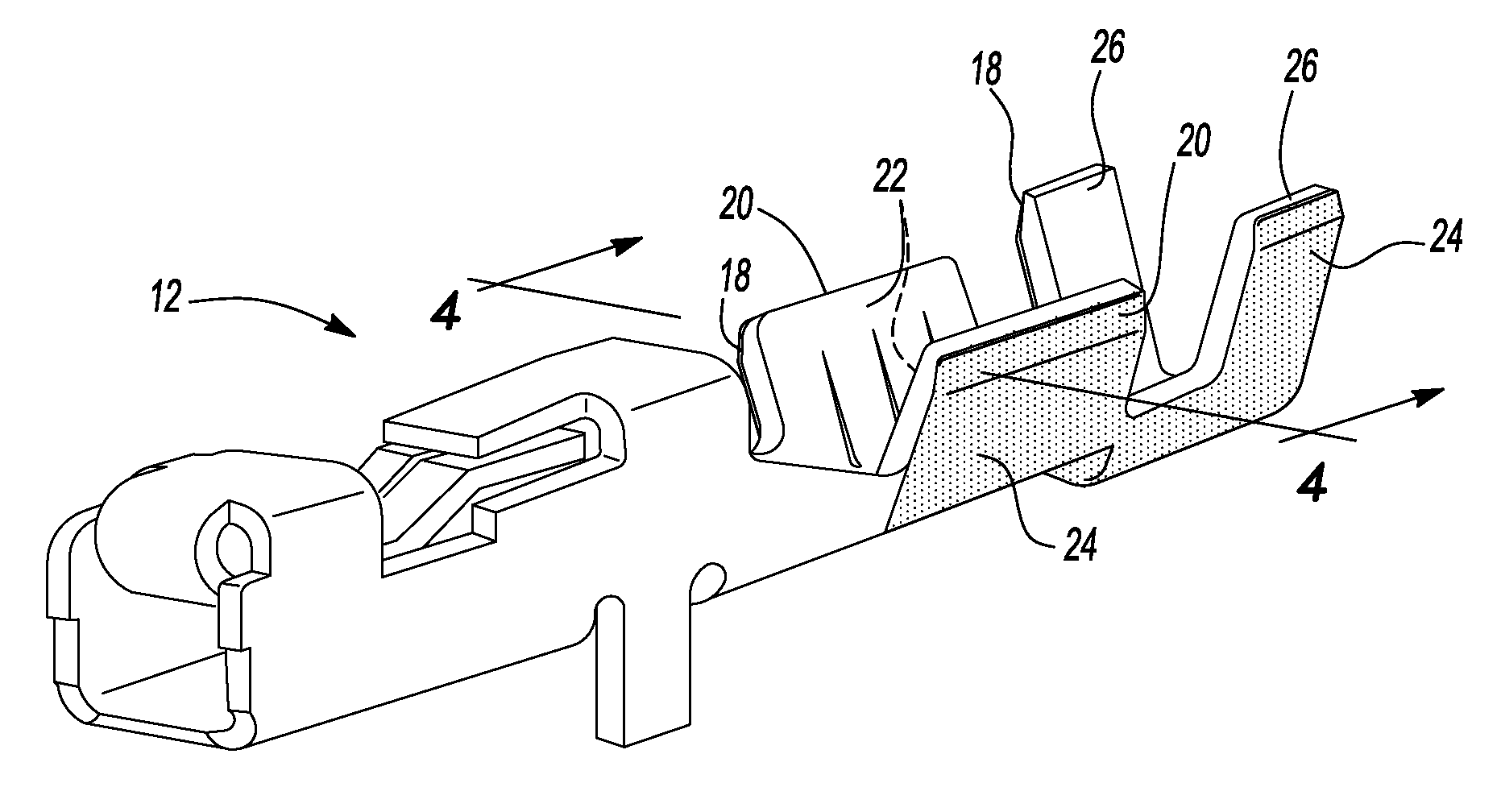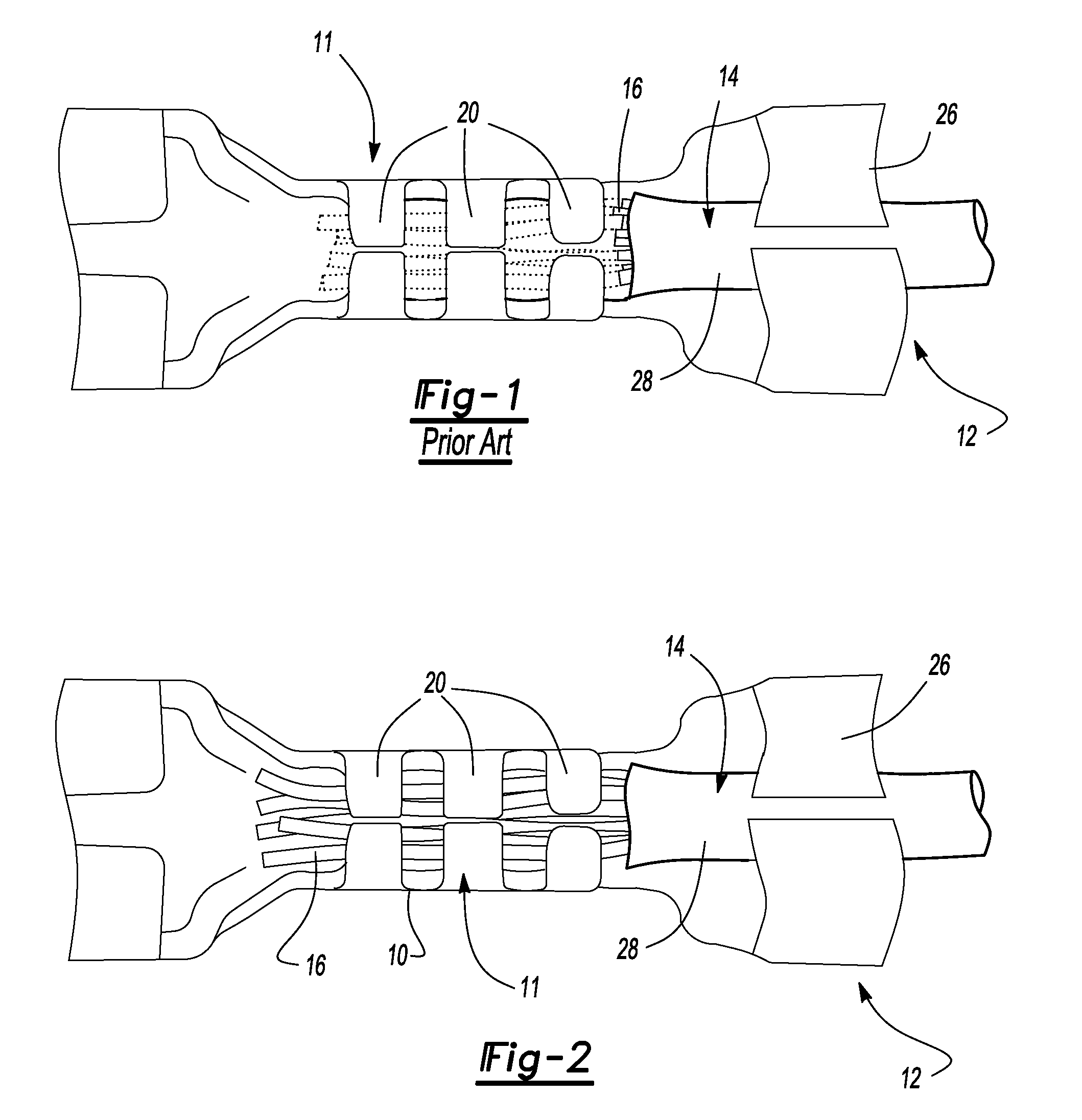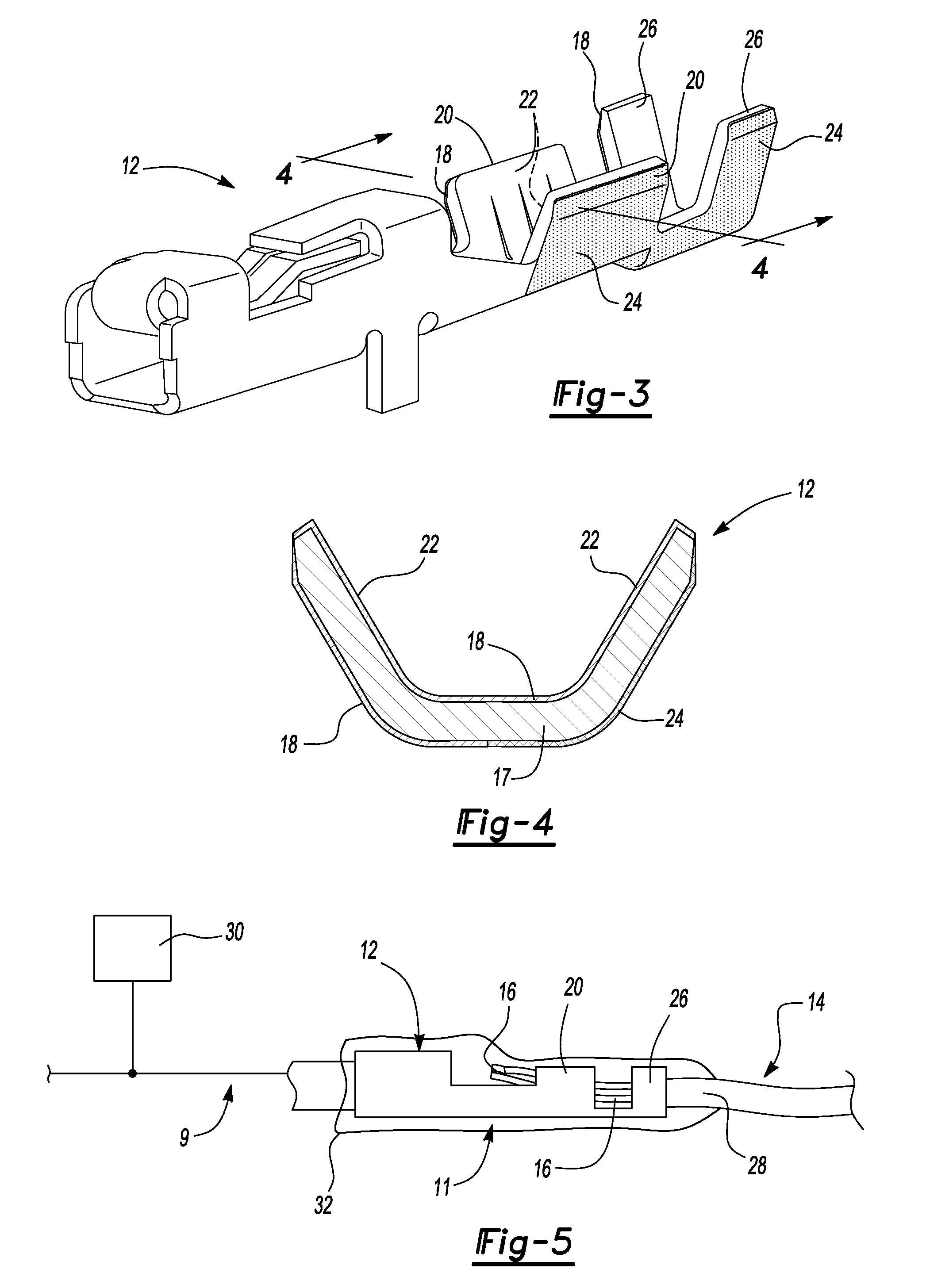Electrical terminal connection with galvanic sacrificial metal
a technology of electrical terminals and galvanic sacrificial metals, applied in the direction of electrical apparatus, contact members, connections effected by permanent deformation, etc., can solve the problems of corrosion of aluminum, aluminum-based interface between aluminum-based cables and copper-based terminals, and aluminum-based terminals can be subject to galvanic corrosion and other problems, to achieve the effect of preventing corrosion and preventing corrosion
- Summary
- Abstract
- Description
- Claims
- Application Information
AI Technical Summary
Benefits of technology
Problems solved by technology
Method used
Image
Examples
Embodiment Construction
[0020]Referring to FIG. 2, a tin-zinc electroplated coating 10 can be applied to a copper-based electrical terminal 12 that is conventionally crimped to a stranded aluminum-based cable 14 to form electrical connection structure 11. The terminals were subjected to a salt-fog for four days to test the resistance to galvanic corrosion. Very little corrosion is shown either on the terminal with the tin-zinc plating or the exposed stranded wire ends 16 of the aluminum-based cable 14. This reduced corrosion level is a great improvement over the corroded connection shown in FIG. 1 that has the same construction minus the tin-zinc electroplating and underwent the same salt-fog test. Other methods such as a thermal spray or kinetic spray can be used to apply the tin-zinc to the terminal.
[0021]Significant improvement in galvanic corrosion resistance of aluminum-based cable connection to copper-based electrical terminals occurs by adding the tin-zinc coating to electrical terminals. The zinc a...
PUM
| Property | Measurement | Unit |
|---|---|---|
| electronegative | aaaaa | aaaaa |
| electrical | aaaaa | aaaaa |
| corrosion resistant | aaaaa | aaaaa |
Abstract
Description
Claims
Application Information
 Login to View More
Login to View More - R&D
- Intellectual Property
- Life Sciences
- Materials
- Tech Scout
- Unparalleled Data Quality
- Higher Quality Content
- 60% Fewer Hallucinations
Browse by: Latest US Patents, China's latest patents, Technical Efficacy Thesaurus, Application Domain, Technology Topic, Popular Technical Reports.
© 2025 PatSnap. All rights reserved.Legal|Privacy policy|Modern Slavery Act Transparency Statement|Sitemap|About US| Contact US: help@patsnap.com



